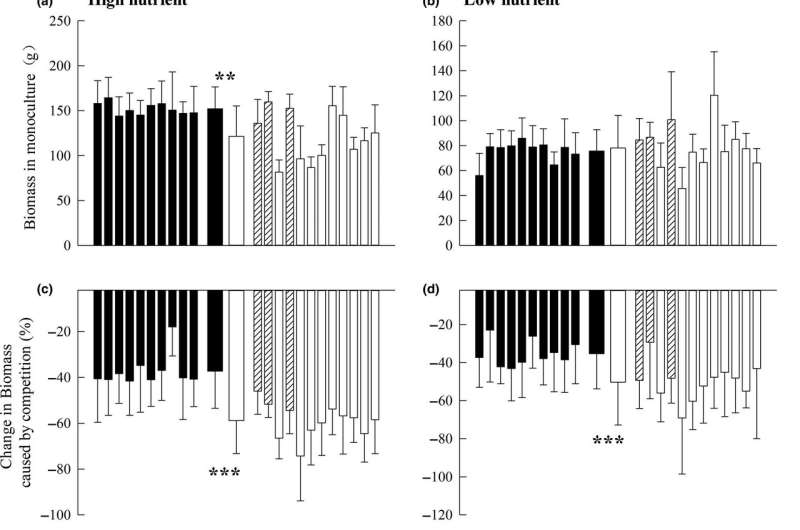Chromolaena odorata increases resource investment into growth through postintroduction evolution

Chromolaena odorata is a plant species native to North, Central, and South America, but is a noxious invasive perennial herb or subshrub. Although C. odorata has been introduced into Asia for nearly 100 years, the route of the spread of C. odorata throughout Asia is not well known.
During the invasion process, C. odorata strengthens its defense mechanisms against generalist herbivores and enhances allelopathic effects. However, previous studies did not consider the source of C. odorata and thus did not exclude founder effects. It is therefore necessary to confirm the source of C. odorata in native ranges and then compare invasive populations and source populations.
In a study published in Ecology and Evolution, researchers from Xishuangbanna Tropical Botanical Garden (XTBG) combined genetic and phenotypic data of Chromolaena odorata populations sampled across native and introduced ranges to investigate the role of post-introduction evolution in the successful invasion of C. odorata.
They found that the level of genetic diversity of C. odorata plants throughout Asia is significantly lower than that in native populations. Moreover, different founder effects events were interpreted as the main cause of the genetic structure observed in introduced ranges.
They also found that total biomass and height of plants from the invasive range were larger than that from the native range at high nutrient supply, but not at low nutrient level.
The results indicated that C. odorata increased resource investment into growth through post-introduction evolution.
"Innate competitive advantages may have contributed to the successful introduction of C. odorata in Asia, but post-introduction evolution is also essential for the species' establishment and expanding in introduced ranges," said Dr. Zheng Yulong, principal investigator of the study.
More information: Weitao Li et al. Postintroduction evolution contributes to the successful invasion of Chromolaena odorata, Ecology and Evolution (2020). DOI: 10.1002/ece3.5979
Journal information: Ecology and Evolution
Provided by Chinese Academy of Sciences





















